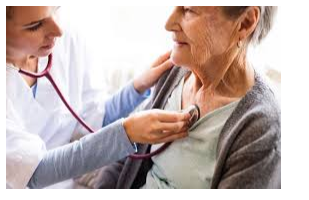Aging Process
Aging Process
Aging Process: Overview

The aging process is a continuous biological, physical, and psychological phenomenon that affects all living organisms. In the context of nursing care, understanding the aging process is essential to provide effective care and teaching across the lifespan, from infancy through old age. The aging process includes various expected changes in body systems, cognition, and emotional well-being, and it is vital to understand these changes to offer appropriate care and reinforce education at different life stages.
1. Identify Client Knowledge on Aging Process and Assist in Reinforcing Teaching on Expected Changes Related to Aging

Overview of Aging Changes
The process of aging results in predictable and individual changes across all body systems. These changes include alterations in physical appearance, mobility, cognitive abilities, sensory perception, and emotional well-being. Key systems that undergo significant changes with aging include the cardiovascular, musculoskeletal, respiratory, and sensory systems.
Key Areas to Educate Clients About Aging
- Physical Changes: With aging, the skin becomes thinner and loses elasticity, leading to wrinkles and dryness. Hair may turn gray or thin. Vision and hearing impairments are common, with presbyopia (difficulty focusing on close objects) and presbycusis (age-related hearing loss) being prevalent.
- Musculoskeletal Changes: Bone density decreases, leading to conditions like osteoporosis. Joint cartilage wears down, causing arthritis. Muscle mass declines, leading to weakness and reduced stamina.
- Cardiovascular Changes: The heart becomes less efficient, and blood vessels lose elasticity, contributing to hypertension. The risk of cardiovascular diseases such as heart failure and coronary artery disease increases.
- Cognitive Changes: Aging can cause slower processing speeds, but severe memory loss and cognitive decline are not a normal part of aging. Conditions such as dementia and Alzheimer’s disease need to be distinguished from normal aging.
- Psychological Changes: Emotional stability can be affected by changes in social roles, loss of loved ones, retirement, and physical decline. Depression, anxiety, and loneliness are common among the elderly.
Nursing Role in Reinforcing Education
As nurses, it’s critical to assess each client’s understanding of the aging process and provide education that is tailored to the individual’s stage of life and health status. Reinforce the idea that aging is a natural process and not something to fear. Help the client recognize the importance of maintaining a healthy lifestyle, including proper nutrition, exercise, and regular health screenings.
2. Provide Care That Meets the Needs of the Newborn Less Than 1 Month Old Through the Infant or Toddler Client Through 2 Years

a) Newborn (0-1 Month)
Physical Development
- At birth, the newborn’s weight, length, and head circumference are important indicators of health.
- Reflexes are vital during this period, including rooting, sucking, and grasping reflexes.
- Immune system is still developing, which makes newborns vulnerable to infections.
Nursing Care
- Monitor for signs of jaundice and ensure adequate feeding.
- Promote skin-to-skin contact to promote bonding and breastfeeding.
- Teach parents about safe sleep practices (e.g., placing the infant on their back to sleep to prevent SIDS).
- Regular assessments of head circumference and developmental milestones (e.g., lifting head during tummy time).
b) Infant (1 Month – 12 Months)
Physical Development
- Rapid growth occurs, with the infant typically tripling their birth weight by 12 months.
- At around 4-6 months, infants begin to sit up with support and develop hand-eye coordination.
- Solid foods can be introduced between 4-6 months.
Nursing Care
- Encourage breastfeeding or formula feeding as the primary source of nutrition.
- Guide parents on introducing solids and monitoring for allergies.
- Assess infant reflexes, motor skills, and developmental milestones, including the ability to roll over, crawl, and stand.
- Educate parents on immunizations and routine check-ups.
c) Toddler (1 Year – 2 Years)
Physical Development
- Toddlers experience a slower growth rate, but fine and gross motor skills improve. Walking, climbing, and fine motor skills like stacking blocks are key milestones.
- Toddlers begin to develop language skills, with many saying their first words between 12-18 months.
Nursing Care
- Emphasize the importance of a balanced diet, including fruits, vegetables, and protein.
- Ensure safety through proper car seat use and baby-proofing the home.
- Promote socialization with peers and encourage potty training.
- Educate parents on emotional development, temper tantrums, and setting boundaries.
3. Provide Care That Meets the Needs of the Preschool, School-Age, and Adolescent Client Ages 3 Through 17 Years

a) Preschool (3 – 5 Years)
Physical Development
- Preschoolers grow at a steady rate but are still developing fine motor skills, such as using scissors, drawing, and dressing themselves.
- They continue to refine their language skills and exhibit more social interaction.
Nursing Care
- Ensure regular immunizations, dental care, and annual check-ups.
- Encourage outdoor play and physical activity.
- Discuss the importance of healthy eating habits and begin teaching about proper hygiene.
- Foster emotional development by teaching coping skills and social skills.
b) School-Age (6 – 12 Years)

Physical Development
- School-age children experience a steady increase in strength and coordination, and they develop more advanced motor skills.
- Cognitive abilities improve, including problem-solving skills and abstract thinking.
Nursing Care
- Address issues like childhood obesity and promote a balanced diet with physical activity.
- Ensure regular school check-ups, dental care, and vision assessments.
- Foster a positive body image and address any concerns about self-esteem.
- Teach the importance of safety, including seat belts, helmets, and stranger danger.
c) Adolescent (13 – 17 Years)

Physical Development
- Adolescence is marked by the onset of puberty and significant physical growth, including sexual development, growth spurts, and changes in body composition.
- Cognitive development includes abstract thinking and more complex decision-making abilities.
Nursing Care
- Provide education on sexual health, including puberty, contraception, and sexually transmitted infections (STIs).
- Promote mental health awareness and address concerns like depression, anxiety, and peer pressure.
- Encourage healthy lifestyle choices, such as avoiding smoking, alcohol, and drugs.
- Support the development of a healthy self-image and body positivity.
4. Provide Care That Meets the Needs of the Adult Client Ages 18 Through 64 Years
a) Young Adults (18 – 30 Years)

Physical Development
- Young adults generally experience peak physical health, including strength, energy, and stamina.
- The body’s systems are fully mature, but the risk of injury and health issues due to lifestyle choices (e.g., lack of exercise, poor diet) can begin to emerge.
Nursing Care
- Encourage healthy behaviors, including regular exercise, balanced nutrition, and regular health screenings.
- Provide guidance on stress management, career development, and healthy relationships.
- Discuss the importance of reproductive health and contraception.
b) Middle-Aged Adults (31 – 64 Years)

Physical Development
- Middle-aged adults begin to experience subtle changes in physical appearance, such as graying hair, skin changes, and a decline in muscle mass.
- Risk for chronic health conditions, such as hypertension, diabetes, and cardiovascular disease, increases.
Nursing Care
- Encourage preventive care, including regular screenings for blood pressure, cholesterol, and cancer.
- Address mental health concerns, such as midlife crises or anxiety about aging.
- Discuss work-life balance, stress management, and maintaining physical activity.
5. Provide Care That Meets the Needs of the Adult Client Ages 65 and Over

Physical Changes in Older Adults
- Musculoskeletal System: Loss of bone density and muscle mass, leading to frailty and increased risk of falls and fractures.
- Cardiovascular System: Reduced efficiency of the heart and blood vessels, contributing to conditions like hypertension, heart disease, and stroke.
- Cognitive Function: Decreased processing speed, though many older adults retain cognitive abilities. Alzheimer’s disease and other dementias may develop in some.
Nursing Care
- Promote safe environments to prevent falls and injuries. Use assistive devices such as walkers and grab bars.
- Encourage social interactions to reduce feelings of isolation and loneliness.
- Provide education on managing chronic conditions like arthritis, diabetes, and heart disease.
- Discuss end-of-life issues, including advance directives and palliative care options.
Conclusion: Lifelong Care and Education
Nurses must assess and address the needs of clients throughout their lifespan. This includes reinforcing knowledge about aging, promoting preventive care, providing age-appropriate health education, and recognizing normal and abnormal aging processes. By empowering clients with knowledge and supporting them through each developmental stage, nurses help to ensure that each individual can achieve the best possible health outcomes as they age.
